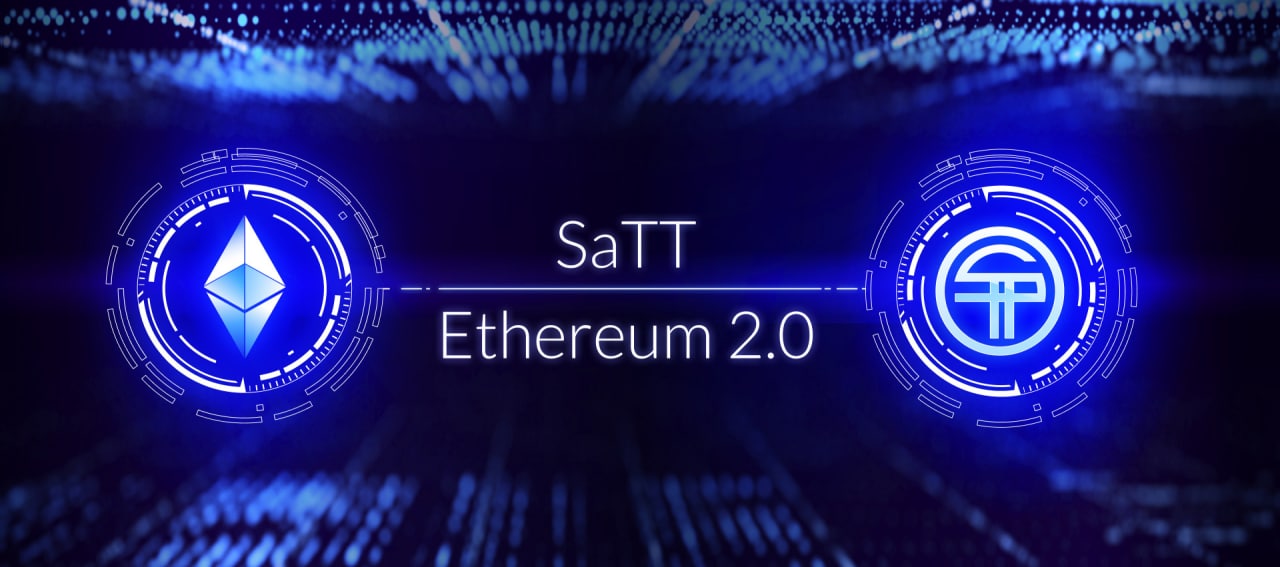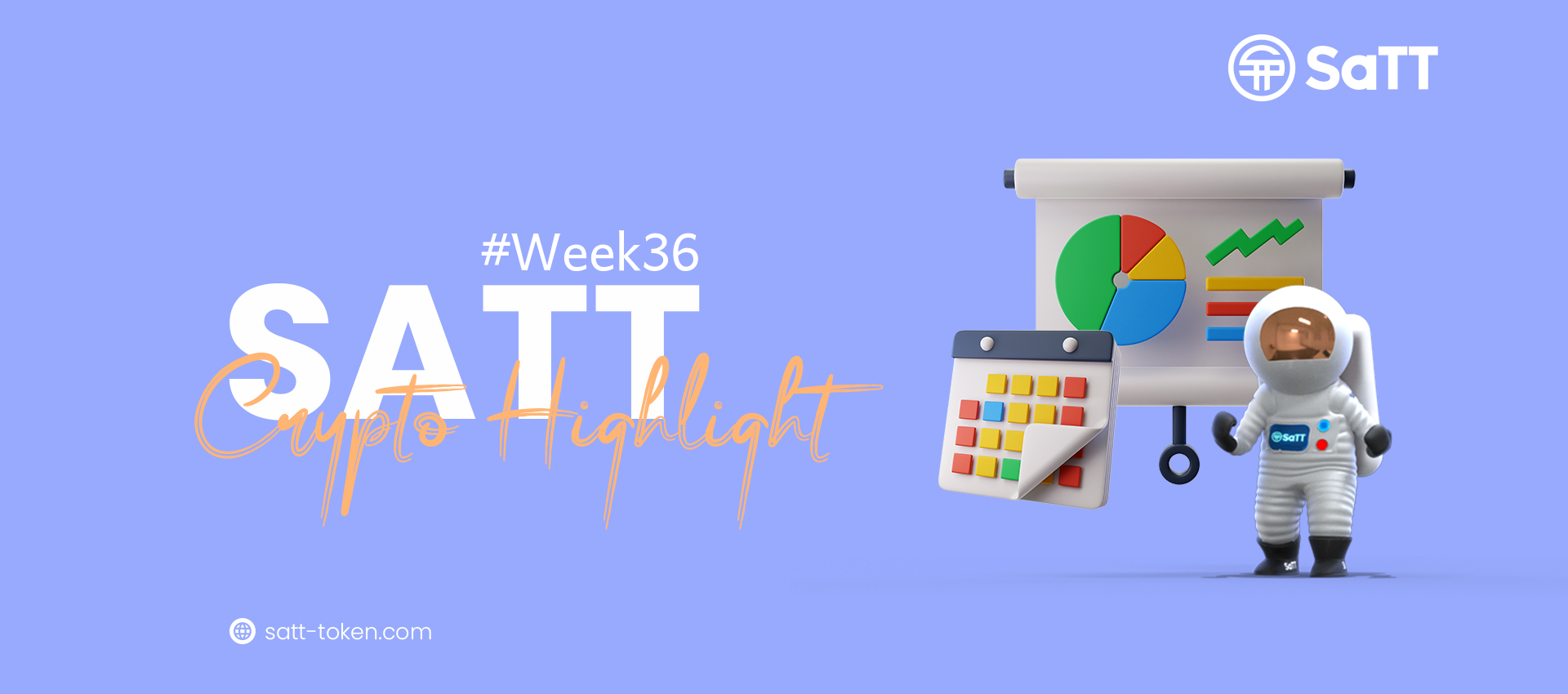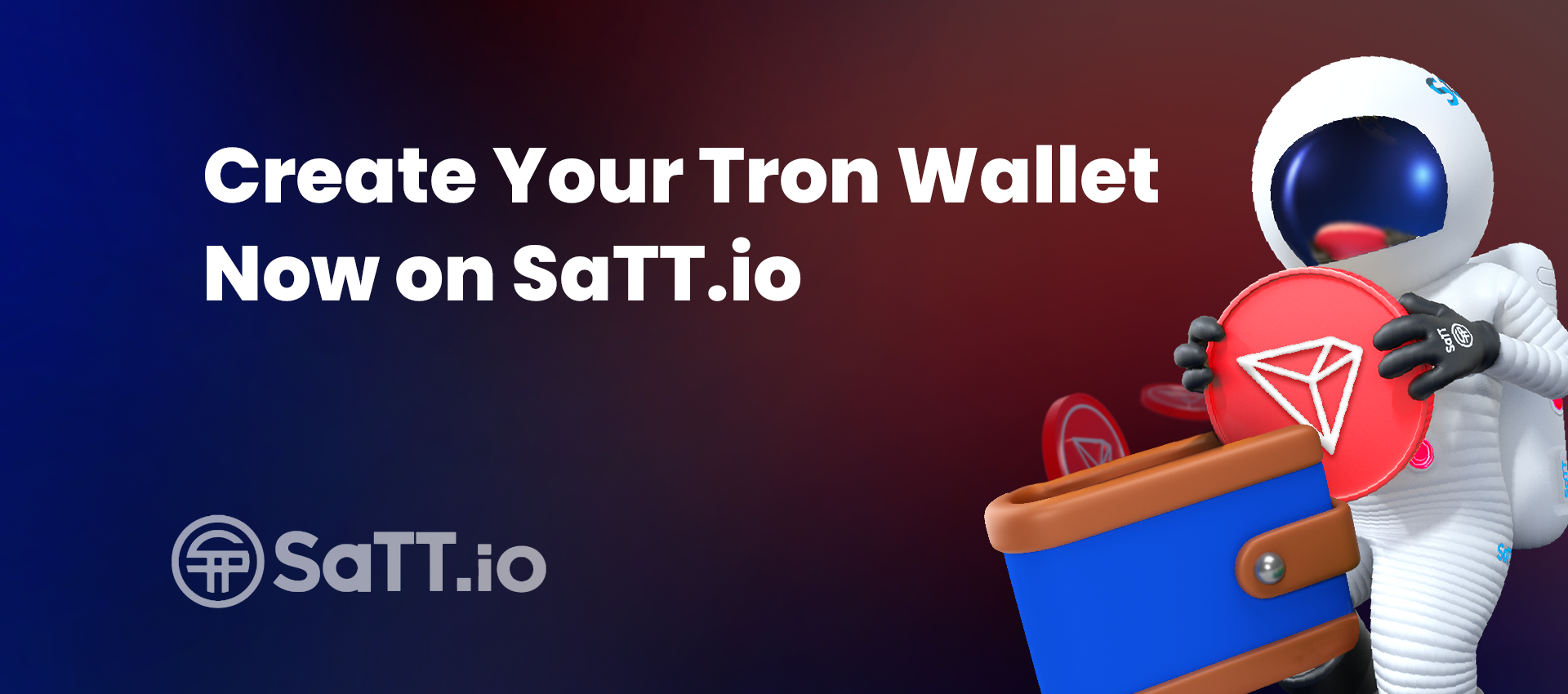
SaTT X Ethereum 2.0
Table of Contents
What is Ethereum 2.0 and why do we need this upgrade?
Ethereum launched in 2015 with the objective of broadening the potential use cases of blockchain technology. It supported smart contracts and almost doubled the transaction speed of cryptocurrencies as compared to the Bitcoin network.
Similar to Bitcoin, Ethereum also employed the proof-of-work (PoW) consensus protocol at launch. But the founders of Ethereum were well aware of its shortcomings and planned to switch to the proof-of-stake (PoS) protocol at a later stage. This transition of the Ethereum network from PoW to PoS protocol and Ethereum 1.0 to Ethereum 2.0 has long been anticipated.
In this article, we explain the concept of Ethereum 2.0.
What is Ethereum 2.0?
The primary difference between Ethereum 1.0 and Ethereum 2.0 is the underlying consensus protocol. Until recently, the Ethereum network only used the PoW consensus protocol. While this was the most viable option initially, the use of PoW brought issues such as lack of scalability, high energy consumption, and high network fees.
The rollout of Ethereum 2.0, which is a four-phase process, began in December 2020. Currently, Ethereum 2.0 or ETH 2 functions alongside Ethereum 1.0. It uses the proof-of-stake consensus protocol instead of the proof-of-work protocol used by Ethereum 1.0.
Ethereum 2.0 will be exactly the same as Ethereum 1.0 from a utility perspective. It will allow developers to use smart contracts and create dApps. However, using the PoS protocol will make the network thousands of times faster and more secure.
Why Switch to PoS from PoW?
The lack of scalability has been the biggest concern of the Ethereum network. While traditional payment providers such as Visa can process 24,000 transactions per second, Ethereum could only handle around 15 per second. In December 2017, due to high traffic on the popular Ethereum-based game, Crypto Kitties , the Ethereum network’s inability to handle high-traffic games was infamously put on public display. Again in 2020, the DeFi craze with the corresponding soaring gas fees also demonstrated the network’s inefficiencies.
Besides, the use of PoW makes the Ethereum network extremely energy-intensive. This is because the network currently relies on cryptocurrency miners who use high computing power devices to verify new blocks on the blockchain. These devices consume tons of electricity and take the network’s annual electricity consumption to more than 14.96 TWh. This is approximately the same amount of electricity consumed by the Central European nation, Slovenia.
As already outlined, the use of PoS protocol in Ethereum 2.0 will increase the network’s scalability. Ethereum founder, Vitalik Buterin, claims that Ethereum 2.0 will be able to handle a demand of almost 100,000 transactions per second. In addition, Ethereum 2.0 will also significantly reduce the energy consumption of the network and increase its security.
The Four Phases of Ethereum 2.0 Rollout
Rather than doing a sudden switch, the Ethereum network will transition from Ethereum 1.0 to 2.0 over the course of more than one year.
The first phase, Phase 0, began in 2020 with the launch of the beacon chain in December. It is a new chain that will keep the records of Ethereum 1.0 and Ethereum 2.0 in sync with each other. The second phase, Phase 1, is set to take place in 2021 where new shard chains will be added to the network. These chains will be a part of the Ethereum network but will individually handle small portions of the total transactions requested on Ethereum. This will enable the network to collectively process high volumes of transactions. The beacon chain launched in Phase 0 will also be responsible for keeping the records across all shard chains in sync with the Ethereum chain.
The third phase, Phase 1.5, will convert the older version of the Ethereum network into a shard chain that will use proof-of-stake protocol. The final phase, Phase 2, will render full functionality to the shard chains along with smart contracts support.
ETH Staking
So far, miners needed to solve cryptographic puzzles to verify transactions on the Ethereum network and add new blocks. With the advent of Ethereum 2.0, the network will require network participants to stake a minimum of 32 ETH to become a validator. After users stake the required amount, the network will allow them to verify new transactions on the blockchain and earn ETH rewards. Users who cannot stake 32 ETH individually can still participate in block verification by joining ETH staking pools.
Final Thoughts
It is quite obvious that Ethereum 2.0 will be a terrific upgrade to the current Ethereum network. It will make the network more sustainable by reducing its electricity consumption while also preparing it for mainstream adoption of cryptocurrencies and blockchain technology. Due to the wide range of benefits it has to offer, Ethereum will soon be even more widely implemented across industries throughout the world.
As all SaTT users should know, Ethereum is our choice of protocol and we are very excited with the improvements in Ethereum 2.0. This is the first in a series of articles about Ethereum 2.0, with more coming where we will outline how these improvements impact SaTT.
Stay tuned!





